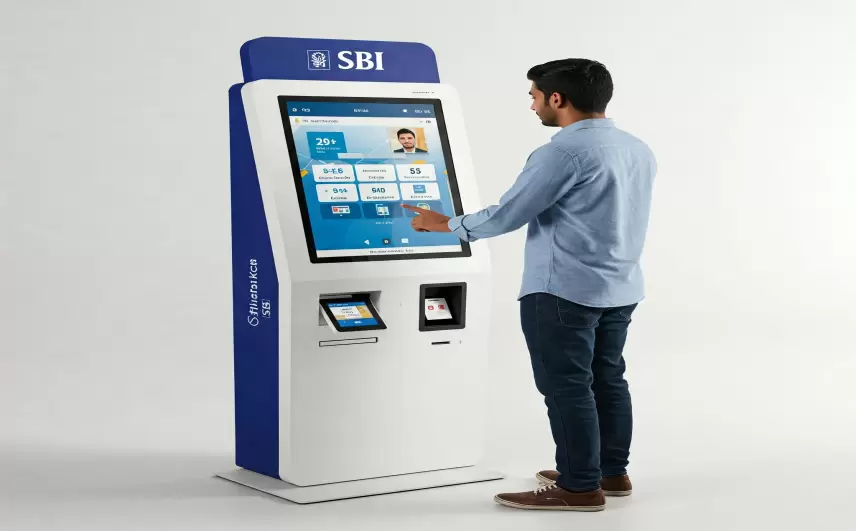SBI Online Kiosk Banking: Empowering Financial Inclusion in Rural India
In today’s digital era, access to banking services is no longer confined to urban bank branches. SBI Online Kiosk Banking, an innovative initiative by the State Bank of India (SBI) and the Reserve Bank of India (RBI), is transforming the way rural and remote communities engage with financial services. This blog delves into the essence of SBI Kiosk Banking, its comparison with traditional banking, and the advantages and disadvantages of this service, optimized for those searching for SBI Kiosk Banking solutions.
What is SBI Online Kiosk Banking?
SBI Online Kiosk Banking is a service designed to bring banking to underserved areas through Customer Service Points (CSPs). These kiosks, often set up in local shops or small booths, act as mini-banks, offering essential services like account opening, deposits, withdrawals, and balance inquiries. By leveraging biometric authentication and digital platforms, SBI ensures secure and accessible banking services for rural India. This initiative aligns with the RBI’s goal of financial inclusion, ensuring every Indian has access to banking, regardless of their location.
How Does SBI Kiosk Banking Work?
Operating a kiosk is straightforward. Customers visit an authorized SBI CSP, select their desired service, and provide details like their account number or biometric data (e.g., thumbprint). The kiosk machine validates the information, processes the transaction, and issues a printed receipt. Services include:
- Opening zero-balance savings accounts
- Cash deposits and withdrawals (up to ₹10,000 daily)
- Fund transfers and balance inquiries
- Micro-insurance and loan applications
This seamless process makes SBI Online Kiosk Banking a game-changer for those far from traditional bank branches.
Comparison: SBI Kiosk Banking vs. Traditional Banking
To understand the value of SBI Kiosk Banking, let’s compare it with traditional banking:
| Feature |
SBI Kiosk Banking |
Traditional Banking |
| Accessibility |
Located in villages and remote areas, no need to travel far |
Requires visiting a bank branch, often in urban areas |
| Operating Hours |
Flexible, often 24/7 based on CSP availability |
Limited to bank hours (e.g., 10 AM to 4 PM) |
| Transaction Limits |
Daily limit of ₹10,000; max account balance ₹50,000 |
Higher or no limits, depending on account type |
| Cost |
No fees for basic services, cost-effective |
May involve fees for ATM use or minimum balance |
| Technology |
Biometric-based, minimal paperwork |
Paper-based or digital, depending on service |
While traditional banking offers more comprehensive services, SBI Kiosk Banking excels in rural banking by providing convenience and affordability.
Advantages of SBI Online Kiosk Banking
SBI Kiosk Banking offers numerous benefits, making it a vital tool for financial inclusion:
- Convenience: Kiosks are located in local communities, eliminating the need for long trips to bank branches.
- 24/7 Availability: Many CSPs operate beyond standard banking hours, catering to busy schedules.
- Zero-Balance Accounts: Customers can open accounts without maintaining a minimum balance, ideal for low-income households.
- Cost-Effective: No fees for basic transactions, unlike traditional banking, which may charge for ATM usage.
- Biometric Security: Transactions are secured with thumbprint authentication, ensuring safety even for illiterate users.
- Financial Inclusion: Brings banking to remote areas, empowering underserved communities.
Disadvantages of SBI Online Kiosk Banking
Despite its benefits, SBI Kiosk Banking has some limitations:
- Limited Transaction Amounts: Daily transaction limits of ₹10,000 and a maximum account balance of ₹50,000 restrict larger transactions.
- Internet Dependency: Poor connectivity in some rural areas can disrupt kiosk operations.
- Security Concerns: Kiosks in high-traffic areas may be vulnerable to vandalism or theft.
- Agent Credibility: Customers must verify the kiosk’s authorization to avoid fraud.
- Limited Services: Unlike traditional banks, kiosks don’t offer complex services like large loans or investment options.
- Learning Curve: Some users, especially the elderly, may find self-service terminals challenging.
Why SBI Kiosk Banking Matters for Financial Inclusion
In India, where many villages lack bank branches, SBI Online Kiosk Banking bridges the gap. By setting up CSPs in local shops, SBI ensures that even those in remote areas can access banking services. This initiative supports the RBI’s vision of financial inclusion, enabling rural communities to save, transfer money, and participate in the economy. For example, a farmer in a remote village can now deposit earnings or withdraw cash without traveling 20 kilometers to the nearest bank.
Conclusion
SBI Online Kiosk Banking is a revolutionary step toward making banking accessible to all, especially in rural India. Its convenience, cost-effectiveness, and focus on financial inclusion make it a powerful alternative to traditional banking, despite limitations like transaction caps and internet dependency. By understanding its advantages and disadvantages, users can make informed decisions about leveraging this service.

